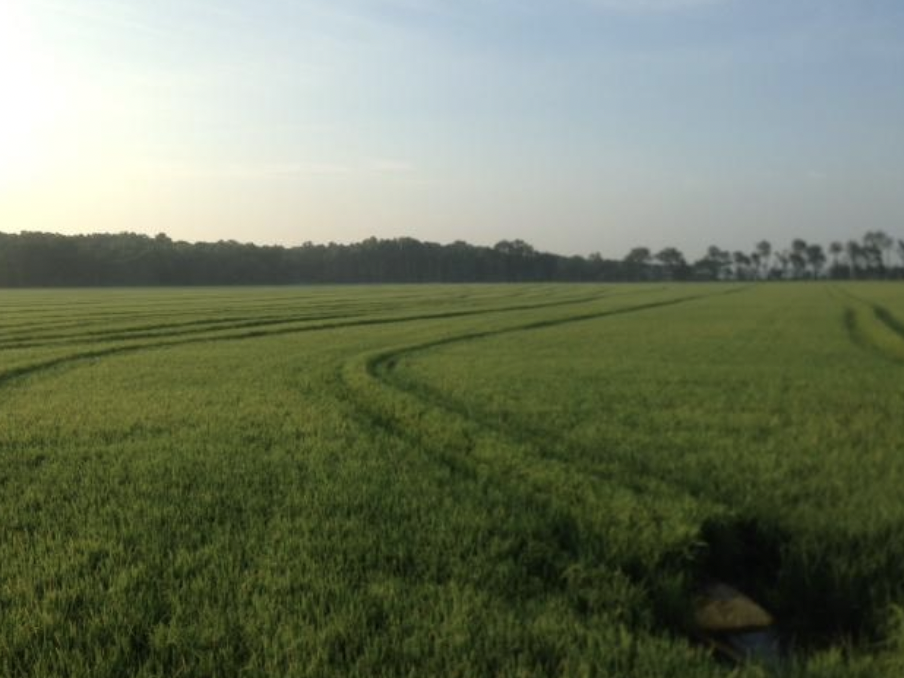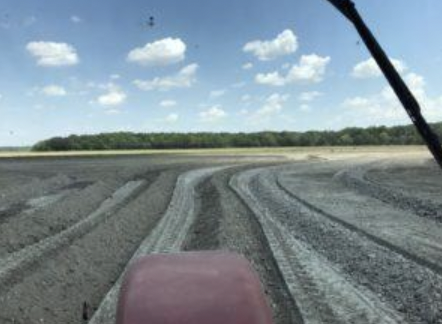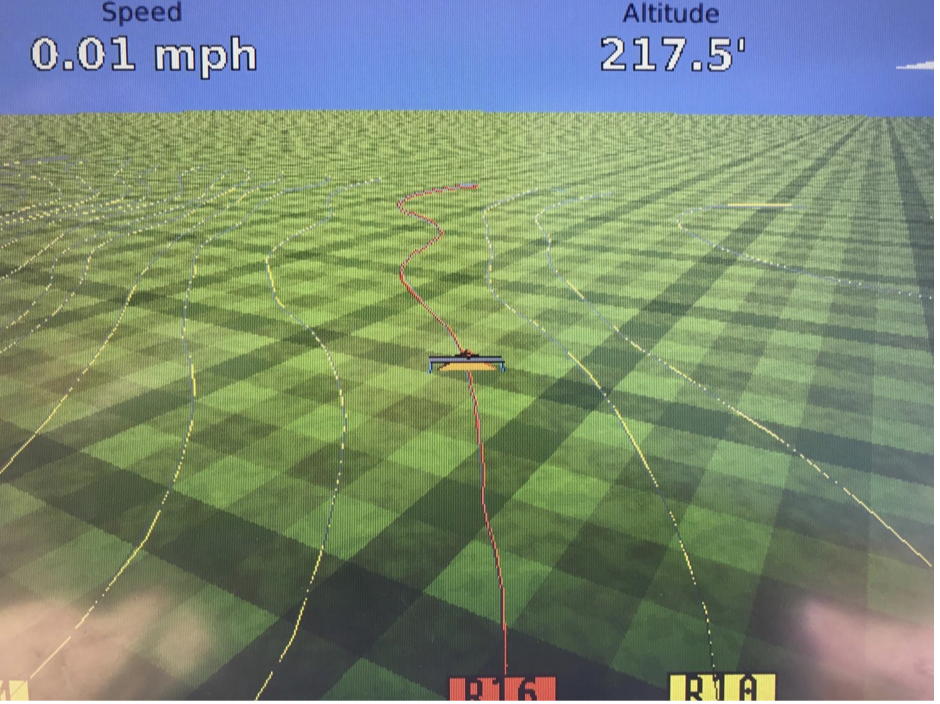Why Do You Have Levees In A Rice Field?
We finished up planting all of our rice just as it has stopped raining in our area. There have been few scattered showers but nothing to speak of on our farm. The soil is too dry to plant soybeans so we are doing what we need to do which is lay polypipe to irrigate our corn and flush water over the rice fields. I will talk more about the corn irrigation in a later post but today I want to answer the most common question we get from people is why do you have levees in the rice fields?
It’s all about the water! Rice grows in a flooded environment and to be the most efficient we need the levees to hold the water at a consistent depth throughout the field. Because the Earth is not flat, we must build (or pull) a levee along the contours of elevation in the field.
You can look at a topographic map of the State of Arkansas here. Although the eastern side of the state appears flat compared to the western side we still have enough slope to need levees to achieve the shallow flood required for rice production. Thankfully we do have a hard-pan of soil just a few inches down that provides a barrier of sorts for the soil to hold the water. And in addition to that, the most efficient fields have a heavy clay soil which also holds water very well. This can be good and bad for us because those soils hold the spring rain water longer and make it difficult to get it planted and harvested in the fall. But they are the very best for growing rice! Go figure!! Anyway, this is why we traditionally grow rice in my area of the state.
Ok, so back to the levees- why are they crooked and why are some straight? Remember the levee is following the contour at a certain elevation. So when the levee is crooked that elevation is meandering around the field and when it is straight the landowner has precision leveled the field. This means they have moved the soil around so that the elevation falls at a consistent rate throughout the field. For example, the topo map would have all parallel lines in a precision level field and that’s what the levees follow! The closer together the levees are the steeper the fall and the further apart they are means the field is flatter.
Hillside with curvy levees
Do you build the levees after you plant the field or before? The answer for us here in NE Arkansas is after. In other growing regions they leave the levees up permanently. We rotate our crops between rice and soybeans mainly so we tear them down after the crop to be able to plant soybeans the following year. To find the levees position you must know the elevation. There are several methods to do this but I will explain the method we use on our farm.
Precision leveled field with straight levees
The tractor that is planting maps out the elevation of the field while planting. It is a good time to map it since that tractor will cover the entire field and be able to make a good map. We space our levees a certain elevation apart and when you enter your desired fall in elevation into our software program it “draws” the levees out. This program is then used to drive the tractor in the correct locations to build the actual levees. Technology has made us much more efficient in this process. Fewer passes with equipment in the field which equates to fewer people needed for the job and no problems finding the elevations.
Screen in the tractor that drives the correct elevations to build the levees
There are also many implements that can be used to build, pack and seed the levees. Yes seed! Even though we have planted the field we want to make sure the levees make rice too! By adding more rice seed as the levee building equipment passes over the levees we can insure rice production on the levees. Every acres counts! Here are a couple of implements we use in our heavy clay soils to build the best levees.
Levee squeeze
Levee packer and seeder
On top of the levee packer is a red box that holds the rice seed. As the tractor drives down the levee, seed is distributed out over the levee.
As I was finishing this post we received a nice rain on most of the farm. Thank you Lord! What a gift for us at this time of year! We are now able to turn off most irrigation wells and save on the cost of watering. Our crew will be working to make sure we do not have standing water for too long in any of the fields at this point. Then we can get back to planting soybeans and hopefully end our planting season.
-Jennifer





